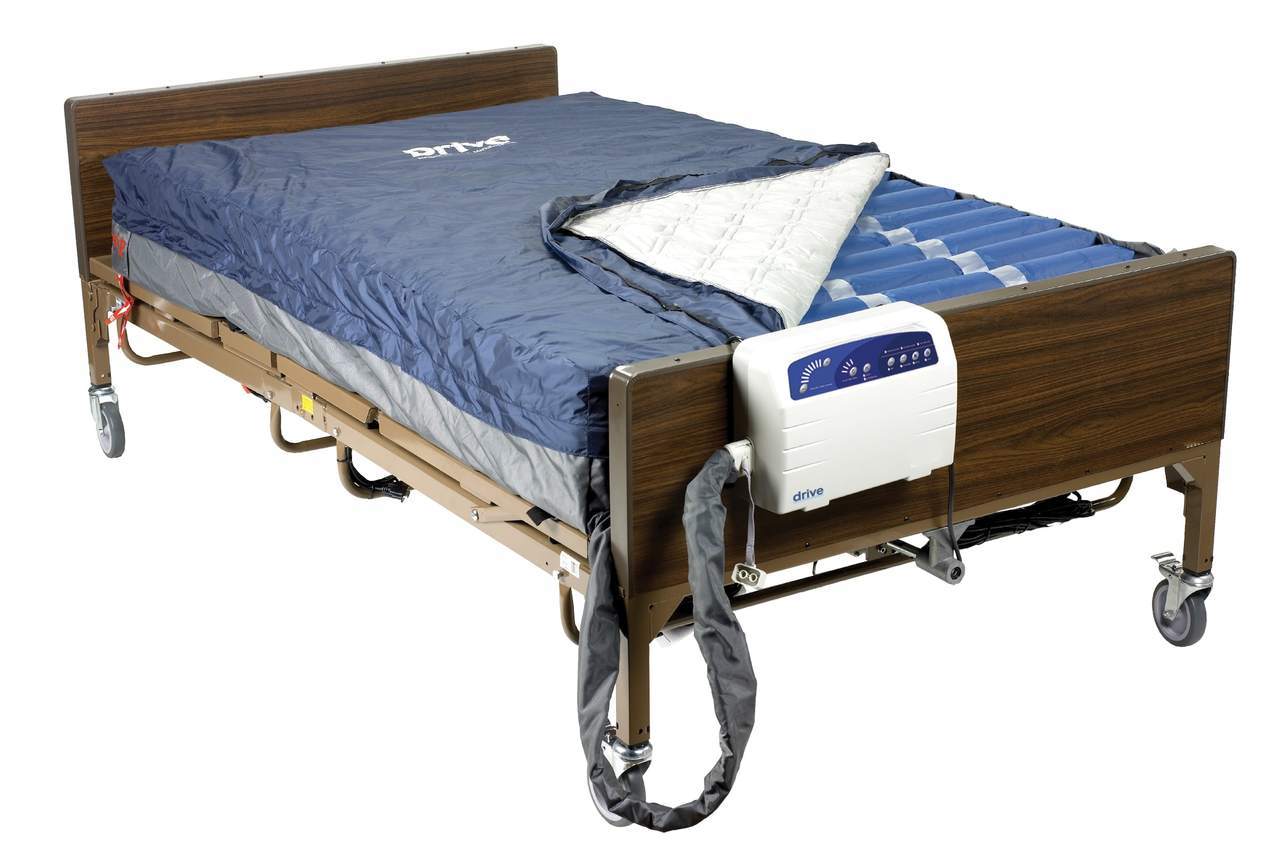
Alternating pressure relief mattresses are key when trying to relieve pressure sore pain or stop pressure sores from forming in the first place. Traditional mattresses are static, so if a person lacks mobility and cannot shift their weight properly or roll over in the middle of the night, pressure mattresses can help.
You can find full replacement systems that completely replace a traditional mattress, or you can choose an overlay system.
Overlay systems allow you to keep your current mattress and put a mattress topper on the existing mattress that is 2-5 inches in depth. Either options will work well for someone at high risk of bed sores or that already has bed sores and is trying to find relief.
What is a Pressure Mattress?
If you’re suffering from a pressure sore, a pressure mattress is designed to increase your comfort and support stress points. A regular mattress allows for stress points to stop pressure ulcers, or bed sores, from occurring.
Bone protrusions are key areas where this pressure will build and lead to a sore.
Sores can be small, or they can be allowed to persist and grow large in size. Pressure mattresses often use air to allow for this pressure to be relieved. The skin is allowed to heal if you have a pressure sore, and if a person is going to be bed ridden, these beds can help prevent pressure sores from occurring.
How Does a Pressure Mattress Work?
Pressure ulcers occur when a person remains immobile, unable to turn or shift in the bed. If a person is allowed to stay in the same position, these ulcers will begin to develop.
These mattresses work by relieving pressure on key points, but there are different mattress types that work slightly differently:
Reactive Surface Mattresses
A reactive mattress is one that is made of memory foam, and it works by relieving pressure by evenly distributing the person’s weight. They respond to a person’s body weight.
These mattresses are a good option to prevent bed sores, but they do not provide the comfort and needs for someone that has higher than a Grade 2 ulcer.
Static mattresses are best used when a nurse or caregiver repositions the person often. Otherwise, you may want to choose one of the other mattress options below.
Active Surface Mattresses
An active surface mattress is one that changes to help relieve pressure and allow the healing of the ulcers. These mattresses offer a dynamic surface where pressure is redistributed often and this is often done with air-flow.
Pumps attach to the mattress and are usually on the footboard of the bed.
The pump will inflate and deflate cells. When bed sores have been allowed to develop to Grade 3 and 4 sores, these mattresses allow for the best relief. The mattress and corresponding air pockets will continually move, allowing for no turning or repositioning of the person.
Air mattresses are recommended when a person needs more than manual repositioning.
Hybrid Mattresses
Hybrid mattresses combine your reactive and active mattress surfaces. These mattresses are versatile, and they offer alternating air cells with a foam mattress topper. The foam provides optimal comfort, while the alternating portion of the mattress keeps pressure relief high.
The hybrid mattress is a great option to help a person stop pressure sores from occurring in the first place. If a person does not have any mobility, they may want to use the active surface mattress instead.
Why Pressure Mattresses Help People with Pressure Sores Sleep
I have had a severe bed sore before, and when you’re in a traditional bed, the pressure is still placed on the area where the pressure sore occurred. My sore was on my tailbone, and since you cannot control your actions while sleeping, I kept laying on my back.
Nurses would turn me, and air “donuts” were placed under my tailbone to help alleviate the pressure.
I had to have surgery to correct the problem because it was allowed to progress, but pressure mattresses helped relieve pain before and after surgery. These mattresses keep pressure off of key pressure areas – in my case, the tailbone.
Since pressure is relieved, the body can begin to heal and stop the sore from progressing.
The static mattress, or your memory foam mattress, is only a good option when you have a very minor sore. Otherwise, hybrid or alternating mattresses will provide the relief that a person with a Grade 3 or Grade 4 pressure sore needs to sleep well at night.
And since the alternating pressure reduces the need to be turned, it will reduce a person’s need for a caregiver to turn them every few hours.
It’s almost impossible to sleep when a caregiver comes into the room every few hours in the middle of the night to turn you to sleep well. Pressure mattresses allow you to sleep better at night and remain comfortable during the day.
** This post was originally published on https://www.upliftingmobility.com/stop-pressure-sores/

